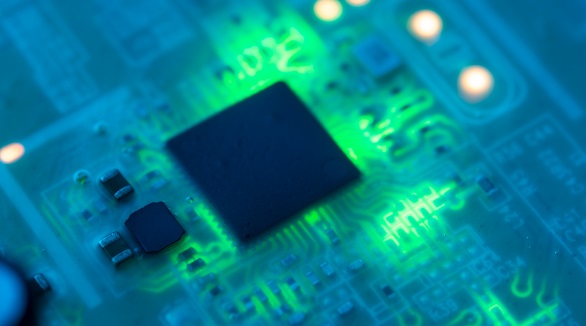How Solder and Coatings Affect PCB Shelf Life
Ensure PCB longevity by optimizing solder materials, protective coatings, and handling to meet industry standards and withstand extreme conditions.
Shelf life and reliability are cardinal issues of printed circuit boards within the electronics industry. PCBs often undergo very extreme conditions such as fluctuation in temperature, high humidity levels, and corrosive environments. The choice of solder materials and protective coatings becomes very crucial to influencing their shelf lives in performance-critical applications. At PCBX, we understand these nuances and help our customers navigate them effectively.
Understanding PCB Specifications and Their Impact
Customized Specifications of PCBs
The specifications of a PCB have a direct impact on durability and performance. Different industries have varying demands that emanate from specified regulatory standards and environments in which the PCBs are likely to exist. For instance, the medical industry calls for strict specifications touching on material compositions for safety purposes.
Type of PCB: The application itself has a say in it, and whether single-layered for simple functions or in multi-layered flexibles to meet applications that are more complex under space constraints, the materials and components would change with the type.
Component Complexity: More complex PCBs with multiple layers and a lot of components, like resistors and capacitors, require precision soldering, and hence, selection of the appropriate solder material is much more critical in terms of longevity.

Solder Materials and Their Influence
The solder utilized not only guarantees connectivity but also affects the life expectancy of a PCB. The proper selection of solder material and methodology can extend the life span of a PCB for as long as ten years.
Lead-Free vs. Leaded Solder: Lead-free solders, being friendly to the environment, are made of either pure tin-copper or tin-silver-copper alloys. However, these provide superior flexibility and life, but their adoption has been vastly replaced with lead-free solder due to regulatory pressures.
Resistance to Corrosion: Additions containing metals such as silver enhance the corrosion resistance of the solder joints. This is something very vital for consistency in the performance of a PCB, especially in corrosive environments.
Oxidation and Environmental Impact: Operating environments can create more extreme solder oxidation situations, which can lead to gradual failures. Environmental conditions must, therefore, be reviewed along with selecting the right solder material and methodology.
Protective Coatings and Plating
Improving the Reliability of PCBs
The coatings and plating not only delay environmental damages to PCBs but also prolong their functional lives.
Conformal Coatings: Generally applied in thin layers of polymers, these coatings offer protection against moisture, dust, and extreme temperatures. They find crucial applications in industries such as marine and aerospace due to high exposure to the environment.
Plating Options for PCBs: Plating protects the board further. Common finishes include:
Sn/Pb Hot Air Solder Level and Pb Free HASL: This offers great mechanical bonding.
Organic Solderability Preservative: This finish is recognized as eco-friendly and budget-friendly.
Immersion Silver and Immersion Tin: Very good conductivity; ideal for high-speed applications.
Electroless Nickel/Gold Plating: Robust, with a very long shelf life, thus recommended where a lot of wear and tear is expected.
Shelf Life of Finishes: Finishes have varying amounts of time before the material cannot be used anymore. The ENEPIG and ENIG finishes have the longest shelf time duration.

Importance of Correct Handling and Shipping
Even the best-designed PCBs, if mishandled, can suffer reduced shelf life. Assurance of clean environments during manufacturing, careful shipment, and appropriate storage conditions holds the key to maintaining PCB integrity.
Contamination Control: Protect the PCBs from contamination by proper handling, cleaning, and storage to avoid defects that would eventually lead to performance compromise over time.
Temperature-Controlled Shipping: It avoids moisture ingress and temperature fluctuations that may damage the PCBs during transit.
The date codes on PCBs give an indication of the time over which the normal shelf life occurs. These codes help in inventory management - more specifically, components can be used in their optimal lifespan. Understanding these codes is very important and would help customers to have a guarantee that material efficacy may be realized over time.
Conclusion
The lifespan of a PCB is determined by several factors that include the type of solder, protective coatings, quality of the build, and operating conditions. Here at PCBX, we are committed to providing you with PCBs that adhere to tight industry standards to realize optimum performance and durability in your applications. We can only achieve this by working closely with competent fabricators and knowing how the material, coatings, and environmental conditions interact. We help customers make the best decisions for increased robustness and dependability of their electronic systems.
Hot Tags:
Contact us

If you can't find what you're looking for, please contact us.
Article

PCB recycling is vital to reduce environmental hazards and recover valuable materials, especially copper. Effective methods include mechanical, chemical, and thermal processes, significantly benefiting sustainability.

PCBs are essential for organizing information and power flow in electronic devices, benefiting from flexibility, durability, safety, efficiency, and heat management.

The article explains the current situation of Printed Circuit Boards and future development based on efficient production helped by advanced software and manufacturing processes. Future technological developments are in store for 3D Printed Electronics, flexible PCBs, eco-friendly biodegradable PCBs, and board cameras. It elaborates on other powerful automation tools that are going to make the entire PCB design process efficient in the near future. All of them will further improve and develop with the technological advances in PCBs, keeping up with the ever-increasing industry and consumer demands.
